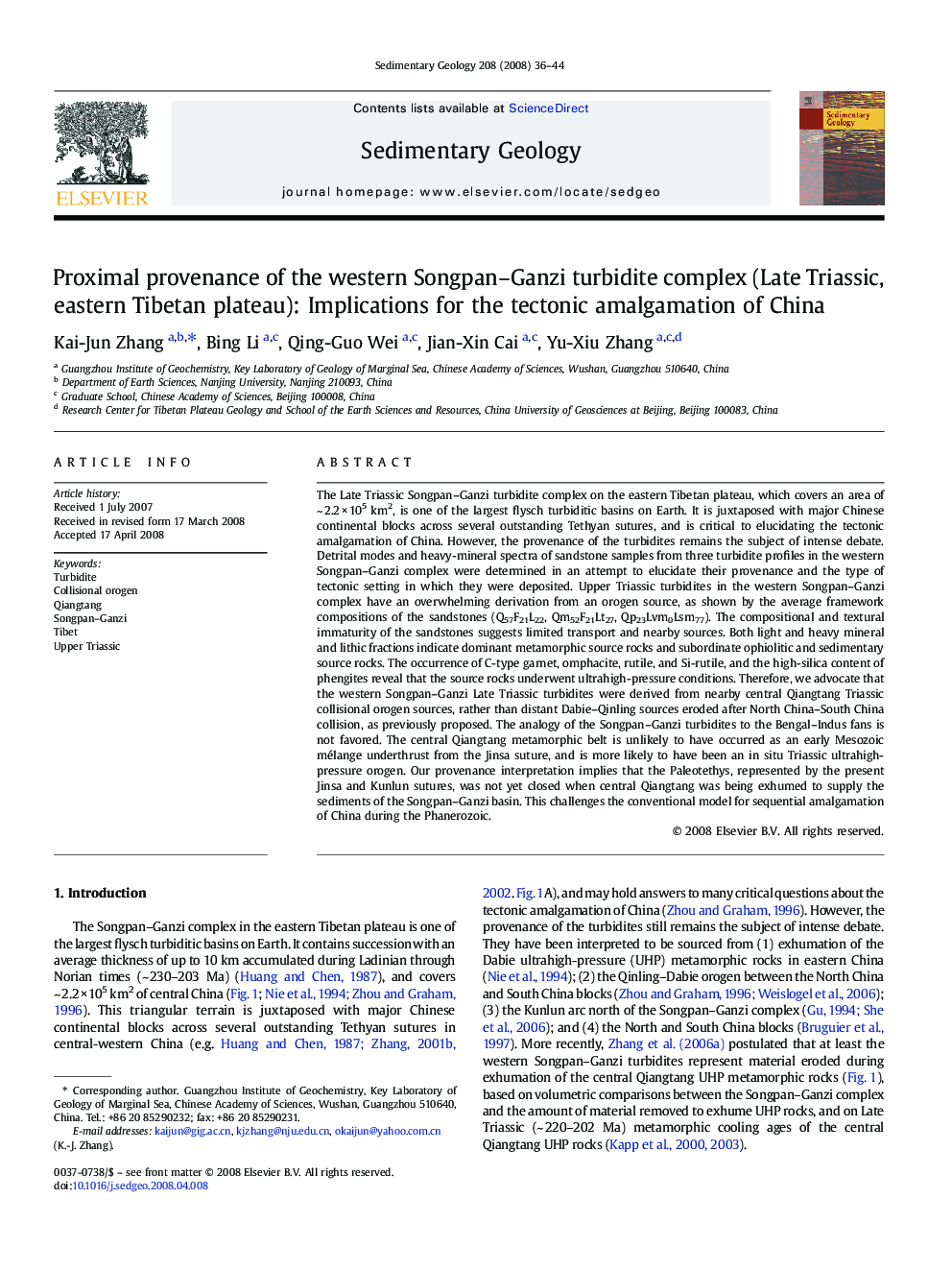| کد مقاله | کد نشریه | سال انتشار | مقاله انگلیسی | نسخه تمام متن |
|---|---|---|---|---|
| 4690552 | 1636153 | 2008 | 9 صفحه PDF | دانلود رایگان |

The Late Triassic Songpan–Ganzi turbidite complex on the eastern Tibetan plateau, which covers an area of ~ 2.2 × 105 km2, is one of the largest flysch turbiditic basins on Earth. It is juxtaposed with major Chinese continental blocks across several outstanding Tethyan sutures, and is critical to elucidating the tectonic amalgamation of China. However, the provenance of the turbidites remains the subject of intense debate. Detrital modes and heavy-mineral spectra of sandstone samples from three turbidite profiles in the western Songpan–Ganzi complex were determined in an attempt to elucidate their provenance and the type of tectonic setting in which they were deposited. Upper Triassic turbidites in the western Songpan–Ganzi complex have an overwhelming derivation from an orogen source, as shown by the average framework compositions of the sandstones (Q57F21L22, Qm52F21Lt27, Qp23Lvm0Lsm77). The compositional and textural immaturity of the sandstones suggests limited transport and nearby sources. Both light and heavy mineral and lithic fractions indicate dominant metamorphic source rocks and subordinate ophiolitic and sedimentary source rocks. The occurrence of C-type garnet, omphacite, rutile, and Si-rutile, and the high-silica content of phengites reveal that the source rocks underwent ultrahigh-pressure conditions. Therefore, we advocate that the western Songpan–Ganzi Late Triassic turbidites were derived from nearby central Qiangtang Triassic collisional orogen sources, rather than distant Dabie–Qinling sources eroded after North China–South China collision, as previously proposed. The analogy of the Songpan–Ganzi turbidites to the Bengal–Indus fans is not favored. The central Qiangtang metamorphic belt is unlikely to have occurred as an early Mesozoic mélange underthrust from the Jinsa suture, and is more likely to have been an in situ Triassic ultrahigh-pressure orogen. Our provenance interpretation implies that the Paleotethys, represented by the present Jinsa and Kunlun sutures, was not yet closed when central Qiangtang was being exhumed to supply the sediments of the Songpan–Ganzi basin. This challenges the conventional model for sequential amalgamation of China during the Phanerozoic.
Journal: Sedimentary Geology - Volume 208, Issues 1–2, 20 July 2008, Pages 36–44